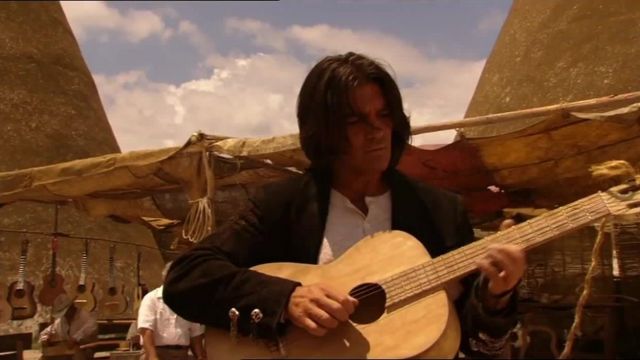Learning the guitar is overwhelming. You need to learn strings, frets, and chord charts before you can even pick up a guitar.
But to be honest, most beginners only need to learn a few basic guitar chords to start playing songs. These chords are present in almost every music genre, be it pop, folk, blues, or rock.
This article takes you through the most essential beginner guitar chords and why you need to learn them.
Why Chords Are a Great Place to Start Learning Guitar
When you’re taking a guitar lesson for beginners, it can be a little tempting to learn the riffs or solos. However, learning the solos first helps you quickly figure out the easiest way to play famous songs and sound good without trying too hard.
Here’s why learning chords is important:
- They’re the foundation of music theory.
- Chords help students correct note patterns they hear to the strings they always press.
- A few chords can help create hundreds of songs.
- Chords are the easiest way to get ahead of your guitar learning goals.
10 Essential Guitar Chords for Beginners
These are the basic guitar chords you need to know to play the guitar smoothly:
1. C Major
This is a staple in countless songs, almost anywhere in the world. One such example is “Let It Be” by the Beatles.
Pro Tip: When playing a C chord, curve your fingers to avoid muting the strings.
2. G Major
This is a great chord to learn finger strength. When creating music, the G Major chord is usually paired with C and D chord progressions. Practice fixes the part where you feel your middle finger is being stretched when playing this chord.
3. D Major
This is an easy major chord to memorize, as it is common in rock and folk music. An example is the song “Knockin’ on Heaven’s Door” by Bob Dylan.
4. A Major
This chord is achievable by putting three fingers close together. It’s a key chord in popular songs like “Wonderwall” by Oasis.
5. E Major Chord
This chord is great for building finger dexterity. When using E major, you have to place the index finger on the fifth string, the middle on the fourth, and the ring on the third. Each finger presses down on a different fret.
6. A Minor Chord
This minor chord adds emotional depth to your sad and thoughtful songs. It’s one example of how a slight note change can alter an entire song. Songwriters often use this chord to shift the mood within a chord progression.
7. E Minor Chord
This is an easy way to get into minor tones. You only have to put your middle and ring fingers on the fifth and fourth strings, second fret.
Your fingers are in a relaxed and natural curve. It makes playing the E minor effortless for beginner guitarists. This chord is also great for practicing switching to other chords like A minor or C major.
8. D Minor Chord
This chord might be tricky if you’re a beginner, but it’s worth learning if you want to write music or songs with dramatic tension.
The progression in this chord is D—F—A. This small change signals a sadder tone, adding more depth to the song.
9. F Major Chord (First Barre Chord)
This chord introduces the barre chords, which students may have a hard time learning. Here’s how you can play this chord:
- Put your index finger across all six strings at the first fret (the barre).
- Put the ring finger on the fifth string, third fret.
- Put the pinky finger on the fourth string, third fret.
10. B Minor Chord
This is a barre chord that levels up your guitar skills. It’s used in many popular songs, and unlike open chords, you need to press all six strings cleanly to pull it off.
How Music Theory Helps Beginners Understand Chords
Music theory goes a long, long way. Knowing how major and minor chords differ helps you learn faster.
Major chords produce a happy and bright sound, while the minor ones are sad and emotional. Barre chords, on the other hand, are movable shapes you can use across frets.
These theories can help you play music and write songs in the future.
Practice Tips for Playing Guitar Chords
Beginning guitarists usually ask the easiest way to get better at playing guitar. The answer lies in consistent practice using the correct techniques. Here are a few ways:
- Allot 10 minutes of your day to play chords.
- Watch interactive online videos and use web resources to check your hand placement.
- Record yourself playing the guitar to hear mistakes.
- Don’t skip the tough chords. You’ll thank yourself for playing them early on.
- Supplement your learning with modern technology. Use apps that teach chord progressions or sign up for online guitar lessons.
Using tools and resources and verifying the right hand placement can keep you interested in learning guitar and help you focus your mind during every practice.
Parting Thoughts
Learning basic guitar chords is a good start, but it doesn’t end there. Once you know how to play the chords, you can create progressions and write songs.
You need to memorize the shapes of guitar chords and understand how they’re used. You must also keep going whenever you feel down and frustrated to grow as a musician.






